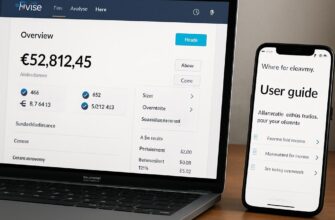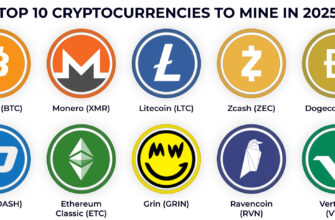January opened with a burst of headlines: six startups from the US became unicorns in January 2025, each crossing the billion-dollar valuation threshold in a compact window that surprised many market watchers. That cluster of valuations wasn’t just a calendar curiosity; it reflected deeper trends in capital flows, sector momentum, and the maturation of companies that had been quietly scaling through the post-pandemic funding landscape.
- What the January surge looked like
- Sectors in favor and why they attracted capital
- Table: sectors and the qualities that carried them to unicorn status
- Who backed these rounds and what that says about the market
- Common characteristics of the Jan 2025 unicorns
- Regional patterns beyond Silicon Valley
- How this wave affects founders and employees
- Investor implications and portfolio construction
- Risks that could temper the excitement
- Real-world context: what I’ve seen covering unicorns
- What founders should do next
- Advice for investors looking to capitalize on similar waves
- Broader economic and policy context
- Final thoughts and what to watch next
What the January surge looked like
The flurry of deal activity in the first month of 2025 felt like a market exhale after a long period of cautious investing. Rather than a single blockbuster IPO or one dominant sector, the new unicorns came from a mix of industries, signaling diversified investor appetite and selective conviction across different business models.
These rounds varied in size and structure — some were late-stage extensions that pushed valuations over the line, while others were aggressive Series C or D financings from growth-stage investors. In each case, the financing packaged more than capital: it brought strategic partnerships, distribution lift, and governance structures designed to prepare firms for public markets or major acquisitions.
Sectors in favor and why they attracted capital
Investors were selective, but a few sectors repeatedly attracted large cheques. Artificial intelligence and enterprise software remained centers of gravity because companies in those spaces showed demonstrable revenue expansion and strong retention metrics. Meanwhile, fintech and climate tech rounded out the interest, with each sector offering distinct narratives about market size and regulatory tailwinds.
Healthcare and life sciences continued to draw strategic funding, particularly for startups that paired data-driven approaches with clear regulatory pathways. Across these fields, the common denominator was convincing evidence that a startup’s solution could scale without losing unit economics, a requirement that separated the new unicorns from the many promising but unproven peers.
Table: sectors and the qualities that carried them to unicorn status
| Sector | Why investors liked it | Common growth signal |
|---|---|---|
| AI / enterprise software | High gross margins, strong renewals, wide TAM | ARR growth >60% with improving net retention |
| Fintech | Embedded payments, network effects, regulatory moats | Rapid user acquisition with rising revenue per user |
| Climate tech / energy | Capex reductions, policy incentives, corporate procurement | Commercial pilots scaling to multi-site deployments |
Who backed these rounds and what that says about the market
The investor mix was telling: established venture capital firms led several deals, but there was also meaningful participation from crossover public-market funds and strategic corporate investors. This blend points to renewed confidence among later-stage allocators that select growth companies can thrive even in a higher-rate environment.
Crossover interest, in particular, signals that public-market investors are again willing to bid on private growth. That shift usually follows several quarters of consistent metrics from private companies, and it tends to compress the time between late-stage rounds and eventual public listings or large exits.
Common characteristics of the Jan 2025 unicorns
Although they came from different industries, the six companies shared a handful of traits: defensible technology or proprietary data, measurable revenue traction, unit economics heading toward or already net-positive, and sales motions that proved replicable at scale. Those qualities created a credible path beyond the symbolic billion-dollar valuation mark.
Governance and capitalization structures also mattered. Founders who retained meaningful incentives while accepting institutional oversight attracted investors who wanted both upside and alignment. In short, these were not vanity valuations; they were outcomes of disciplined scaling under investor scrutiny.
Regional patterns beyond Silicon Valley
The geographical distribution of the new unicorns reflected the long-term decentralization of the U.S. startup ecosystem. While traditional hubs still produced winners, several were based outside the Bay Area — highlighting robust ecosystems in cities such as Austin, New York, and emerging tech clusters across the Sun Belt and the Northeast.
This spread matters for talent pipelines and local economies: when high-growth companies establish headquarters or major offices in secondary cities, they spur service providers, accelerator programs, and investor interest that compound over years. The January cluster is an example of that broader democratization of startup success.
How this wave affects founders and employees
For founders, reaching unicorn status opens new options: a clearer path to IPO, stronger leverage in partnership negotiations, and more leverage in future financings. However, it also increases scrutiny from public-market watchers and requires more rigorous reporting and governance playbooks.
Employees who hold equity experience both psychological and practical consequences. A billion-dollar valuation can jump-start retention efforts and help hire competitively, but employees must remain mindful of dilution, vesting schedules, and the timing of liquidity events. Thoughtful communication from leadership becomes vital in this environment.
Investor implications and portfolio construction
For venture investors, the January activity reinforces the need for diversified exposure across stages and sectors. Late-stage wins can mask early-stage failures, so constructing a portfolio that balances moonshots with durable growth bets is still the safest route to consistent returns.
Limited partners and allocators will watch follow-on performance closely. The true test for these newly minted unicorns will be sustained topline growth and progress on profitability — metrics that will determine whether valuations hold or compress in future rounds.
Risks that could temper the excitement

Macro and micro risks remain. Interest-rate dynamics, a potential slowdown in corporate procurement budgets, and regulatory scrutiny in fintech and AI are all plausible dampeners to future valuations. Companies that relied on optimistic projections may find the next fundraising window more challenging if macro conditions deteriorate.
Operational risks also matter: scaling systems, maintaining product-market fit across larger customer bases, and hiring seasoned executives who can transition the company into its next phase all present real obstacles. The history of startups is full of firms that stumbled once growth outpaced organizational readiness.
Real-world context: what I’ve seen covering unicorns

Having covered dozens of financing rounds and spoken with hundreds of founders, I observe that valuation milestones often mask more than they reveal. A billion-dollar headline is useful for branding and recruiting, but the company’s internal KPIs and execution cadence determine long-term outcomes.
Early in my reporting career I watched a promising firm achieve unicorn status only to struggle with integration after a rapid series of product bets. Conversely, I’ve seen quieter startups hit a $1 billion valuation years later because they methodically optimized margins and retention. The lesson is simple: narratives matter, but they must be backed by repeatable economics.
What founders should do next
- Clarify 18–24 month milestones tied to cash flow and margin improvement.
- Strengthen governance with independent board members who add operational expertise.
- Model dilution scenarios and communicate equity implications transparently to employees.
- Prioritize scalable customer success to protect net retention and average revenue per user.
These actions help translate a headline valuation into a durable company that can withstand market cycles and investor turnover. Practical governance and operational focus matter more than celebratory press releases.
Advice for investors looking to capitalize on similar waves
Investors should focus on durable signals rather than temporary spikes in metrics. Look for companies converting trial users into paying customers at improving rates and those demonstrating customer concentration reduction over time. Such signals indicate scalability rather than one-off growth spurts.
Additionally, participating in rounds where lead investors take active roles in governance tends to reduce downside surprises. The value of experienced board members who have navigated exits can’t be overstated in late-stage financings.
Broader economic and policy context
Policy and macroeconomic environments shape how and when private companies seek liquidity. Regulatory clarity around AI, clarity in healthcare reimbursement, and stable tax policy all influence investor appetite for growth-stage rounds and IPOs. January’s unicorn cluster came at a moment when several of these variables appeared to be stabilizing.
That said, policy shifts can be swift. Founders and investors who plan for multiple regulatory scenarios and maintain flexible runway management are better positioned to weather sudden changes without derailing long-term strategy.
Final thoughts and what to watch next
The emergence of six new U.S. unicorns in January 2025 offers an instructive snapshot of how capital, product-market fit, and timing converge. It’s a reminder that markets move in waves: discrete bursts of risk-on behavior punctuate longer periods of selection and discipline. The real question now is whether these companies will convert unicorn status into category leadership.
Over the next 12 to 24 months, watch for consistent revenue execution, margin expansion, and thoughtful governance moves. Those indicators will separate the unicorns that rewrite their industries from the ones whose valuations become cautionary tales.
If you want more reporting and analysis like this, visit https://news-ads.com/ and read other materials from our website.







